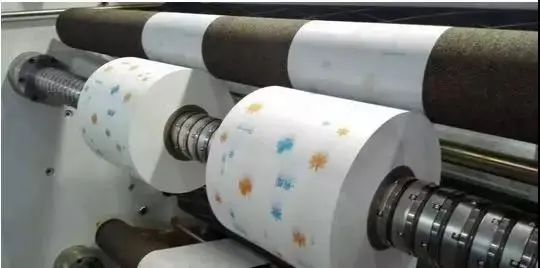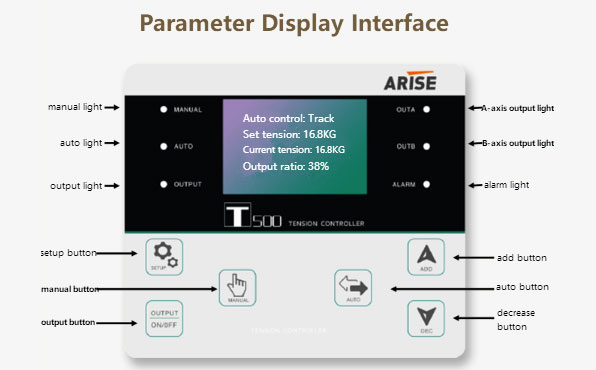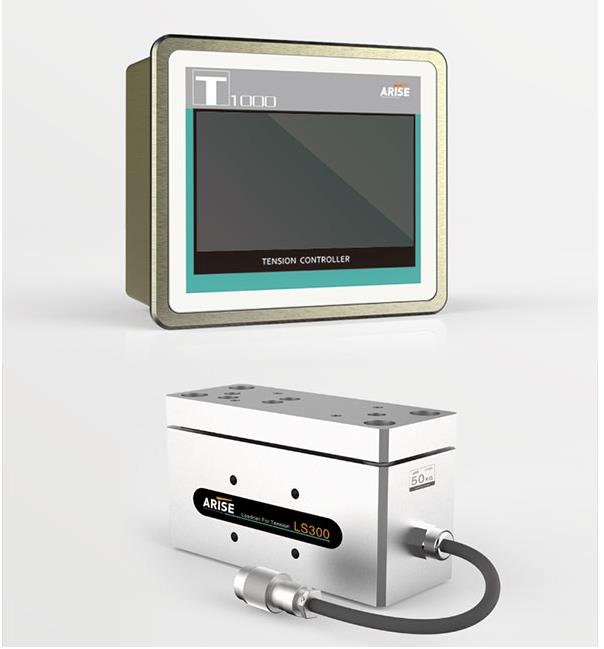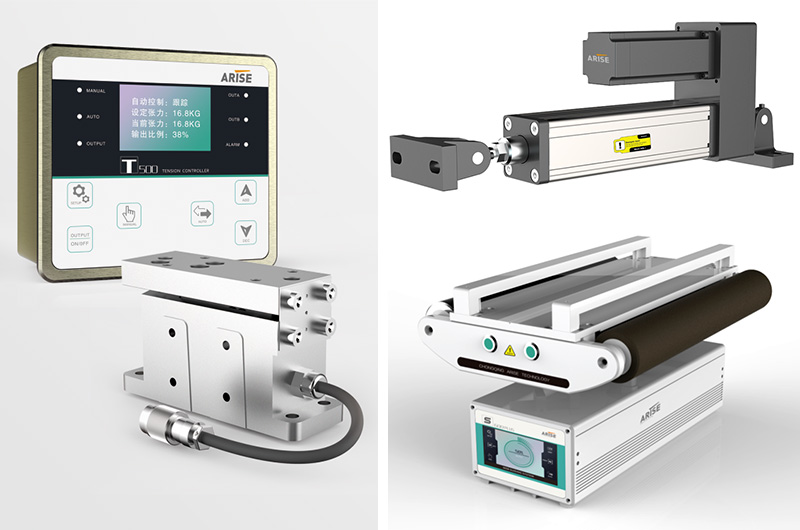Tension Control in High-Speed Web Processing Applications: Why Important, What are the Challenges and Key Methods
Maintaining precise tension control is critical in high-speed web processing applications like as printing, coating, laminating, and converting. The phrase “tension” refers to the force imparted to a continuous web of material (for example, paper, film, or foil) as it passes through several manufacturing phases. Tension control provides consistent product quality, saves waste, and boosts production efficiency. The relevance of tension control, its problems, and the methods and technology used to achieve it in high-speed online processing applications are discussed in this article.

Why Tension Control is Important in High-speed Web Processing Applications
Tension control in high-speed online processing applications is more than a technical detail; it is a vital factor influencing product quality, resource utilization, energy efficiency, and overall operational efficiency.
Product Quality Assurance
One of the key reasons tension control is important in high-speed web processing is the direct impact it has on product quality. Keeping the tension constant during the operation ensures that the web material is treated equally. Irregular tension can cause flaws and blemishes in the finished product. For example:
Uneven tension in printing applications can result in misaligned or distorted pictures, smearing, or uneven ink distribution.
Improper tension control in coating operations can result in uneven coating thickness or streaking, impacting the aesthetic look and functionality of the coated material.
Waste Reduction
Precise tension control affects material utilization and waste reduction directly. High-speed web processing applications frequently necessitate the use of expensive or scarce resources, such as paper, film, or specialty coatings. Proper tension control aids in the reduction of material waste in the following ways:
Material breakdown due to over-tensioning might result in severe waste.
Under-tensioning can cause wrinkles, misalignment, or tearing, rendering parts of the web inoperable.
Energy Efficiency
Maintaining proper tension aids in the optimization of energy consumption in high-speed web processing equipment. Excessive tension can cause motors, drives, and other equipment components to strain, resulting in increased energy consumption and maintenance costs. Energy efficiency is enhanced by maintaining continuous tension, which contributes to cost savings and sustainability.
Process Efficiency
Synchronization and coordination among numerous components, such as rollers, motors, and brakes, are required for high-speed web processing applications. Tension control serves as the linchpin that ensures these components work together efficiently. It facilitates the smooth flow of the web through the production line, reducing downtime and enhancing overall process efficiency.
Reduction of Defective Products
Tension control, in addition to enhancing product quality, helps to avoid the manufacture of defective or inferior items. Defective products not only cause financial losses, but they can also harm a company’s reputation and customer trust. Tension control is an important tool for ensuring that the vast majority of items meet or surpass quality standards.

What are the Challenges of Tension Control in High-speed Web Processing Applications
Because of the dynamic nature of these operations, tension control in high-speed web processing applications presents various issues. It is critical to overcome these obstacles in order to preserve product quality, reduce waste, and ensure effective operation.
Variable Material Properties
Property variations in web materials include thickness, elasticity, and surface qualities. These variances might happen both within and between rolls. As the web material changes, it can impact tension control, requiring constant adjustments to maintain the desired tension level.
Speed Variations
High-speed web processing often involves rapid changes in web speed. Acceleration and deceleration can introduce sudden tension fluctuations. Maintaining consistent tension during these speed variations is challenging and critical for product quality.
Web Accumulation and Splicing
Web accumulation zones or splicing operations are required by many web processing programs. These operations include shortening or lengthening the web or momentarily ceasing it. Proper tension control during these transitions is critical to preventing material and equipment damage.
Web Width Changes
Some operations include altering the width of the web, which might result in tension fluctuations. To avoid wrinkling or stretching, changes in web width must be accompanied by real-time tension adjustments.
Web Flutter and Vibration
The web can flutter and vibrate at high rates, causing uneven stress. These dynamic forces can be difficult to combat, necessitating sophisticated control systems and responsive equipment.
Friction and Slip
Web materials interact with various rollers, guides, and other components as they move through the processing equipment. Inconsistent friction and slip between the web and these components can affect tension control.
Complex Web Paths
Complex web paths, involving several rollers, guides, and direction changes, are used in some high-speed procedures. It can be difficult to maintain continuous tension throughout such complicated routes.
Load Variations
Variations in the amount of web material on a roll (referred to as roll diameter alterations) can have an impact on tension. The tension increases as the roll diameter decreases, and vice versa. To maintain consistent tension, these fluctuations must be adjusted for.
Material Stretch and Shrinkage
Under tension, certain materials may exhibit stretch or shrinkage qualities. Understanding and correcting for these qualities is critical for precise tension control.
Temperature and Humidity Changes
Temperature and humidity, for example, can have an impact on the physical qualities of web materials. These modifications may cause tension differences, particularly in large production runs.
Safety Considerations
Overtensioning can endanger safety by causing equipment damage or perhaps an accident. Implementing safety mechanisms, such as tension limiters or emergency stops, is vital to prevent catastrophic failures.

What are Key Methods for Tension Control in High-speed Web Processing Applications
Dancer Systems
How it works: A dancer system consists of a pivoting dancer roller that responds to variations in web tension. The dancer roller goes up and down as tension increases or lowers.
Control: Sensors track the dancing roller’s position and offer feedback to the control system. To maintain the desired tension, the control system regulates the speed of downstream equipment such as drives or motors.
Applications: Dancer systems are very useful in processes involving changing tension, like as printing and converting. They absorb fluctuations in tension and give smooth, continuous control.
Load Cells
How it works: Load cells are sensors that monitor the amount of stress or tension on the web. They are frequently mounted on idler or guide rollers.
Control: A control system receives continuous feeds of load cell measurements.. The control system adjusts the tension by regulating the speed of motors, drives, or brakes based on the feedback from the load cells.
Applications: Load cells provide fine tension control and are widely utilized in a wide range of high-speed web processing applications like as printing, coating, and laminating.
Pneumatic Brakes and Clutches
How it works: By providing or releasing air pressure on a brake or clutch system, pneumatic brakes and clutches control tension.
Control: The air pressure is adjusted based on the desired tension level. When higher tension is required, more pressure is applied to the brake or clutch, increasing resistance and reducing web speed.
Applications: Pneumatic brakes and clutches are useful in applications requiring quick response times and accurate tension management, such as packing and label printing.

Closed-Loop Tension Control
How it works: Closed-loop tension control systems use feedback from various sensors, including load cells, encoders, or ultrasonic sensors, to continuously monitor and adjust web tension.
Control: To maintain the preset tension level, the control system analyzes the feedback data and makes real-time adjustments to the speed of motors, drives, or brakes.
Applications: Tension control systems are adaptable and may be tailored to specific high-speed web processing applications, resulting in precise and constant tension.
Web Guiding Systems
How it works: Web guiding systems use sensors to detect web misalignment and actuate guide rollers or arms to steer the web back into alignment.
Control: To prevent tension changes caused by misalignment, web guide systems are vital in processes where web alignment is critical, such as printing and laminating.
Applications: Web guide systems are crucial in processes where web alignment is critical, such as in printing and laminating to prevent tension variations caused by misalignment.
Tension Control Software
How it works: To find the ideal control parameters for sustaining tension, advanced tension control algorithms examine data from sensors, load cells, and other feedback devices.
Control: To attain and maintain the intended tension level, the program continuously adjusts control parameters such as motor speed or brake pressure.
Applications: Tension control software improves system efficiency by improving control techniques based on real-time data, making it suited for complex and dynamic operations.
Safety Mechanisms
How it works: Safety mechanisms, such as tension limiters or emergency stops, are integrated into the tension control system to prevent over-tensioning and protect equipment and operators from damage or accidents.
Control: When tension exceeds certain safety limits, these devices activate, immediately stopping or reducing stress to safe levels.
Applications: High-speed web processing systems require safety features to prevent catastrophic failures and safeguard the safety of employees and equipment.
The method of tension control chosen is determined by the web processing application’s individual requirements and challenges. To attain the necessary level of tension control precision and responsiveness, a combination of these strategies may be used in many circumstances.

Conclusion
Tension control is crucial in high-speed web processing applications for maintaining product quality, decreasing waste, and boosting overall process efficiency. Manufacturers can achieve precise and dependable tension control by combining the proper mechanical components, sensors, and control systems. As technology advances, the future of web tension controller may see increasingly more advanced systems and automation, enhancing the potential of high-speed web processing in a variety of industries ranging from printing to packaging and beyond.

